INSTITUT SUPERIEUR D'ANTHROPOLOGIE
INSTITUTE OF ANTHROPOLOGY
ONLINE COURSES / COURS A DISTANCE
INSCRIPTION 2012 / Session III : Juillet 2012
REGISTRATION 2012 / Term III : July 2012
FRANCE – 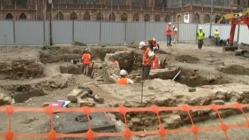 Strasbourg - Les travaux de réaménagement de la place du Château à Strasbourg tournent au ralenti. Depuis le début du mois, une équipe de l'INRAP, l'Institut National de Recherches Archéologiques Préventives) mène des fouilles dans le sous-sol du secteur. Les scientifiques collectent des informations sur l'histoire de ce cœur de ville depuis l'antiquité jusqu'au 19e siècle. Une opération aussi rare qu'enrichissante.
Strasbourg - Les travaux de réaménagement de la place du Château à Strasbourg tournent au ralenti. Depuis le début du mois, une équipe de l'INRAP, l'Institut National de Recherches Archéologiques Préventives) mène des fouilles dans le sous-sol du secteur. Les scientifiques collectent des informations sur l'histoire de ce cœur de ville depuis l'antiquité jusqu'au 19e siècle. Une opération aussi rare qu'enrichissante.
VIDEO = http://alsace.france3.fr/info/deux-rives/les-archeologues-explorent-le-coeur-de-strasbourg-74943062.html
USA – 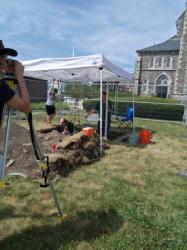 Lowell - The idea of the project is to cast more light on the lives of Irish community in Lowell and their connections to their home country. The church is fertile ground for a dig because it’s relatively undisturbed. When the first 30 Irish laborers came to Lowell in 1831, they settled on a field where the church is now. Eventually, a few hundred arrived, and the bishop allowed a wooden church to be built. By mid-century, several thousand Irish were living there, so the parish bought the property and built the current handsome stone St. Patrick Church. It served as a center of the region’s Irish population until, in an only-in-America twist, it become center of one of the county’s biggest Cambodian populations. Archaeologists are interested in the site because when the area was prepared for the new church, remnants of old settlements were covered by soil. They have been buried – i.e., preserved – ever since.
Lowell - The idea of the project is to cast more light on the lives of Irish community in Lowell and their connections to their home country. The church is fertile ground for a dig because it’s relatively undisturbed. When the first 30 Irish laborers came to Lowell in 1831, they settled on a field where the church is now. Eventually, a few hundred arrived, and the bishop allowed a wooden church to be built. By mid-century, several thousand Irish were living there, so the parish bought the property and built the current handsome stone St. Patrick Church. It served as a center of the region’s Irish population until, in an only-in-America twist, it become center of one of the county’s biggest Cambodian populations. Archaeologists are interested in the site because when the area was prepared for the new church, remnants of old settlements were covered by soil. They have been buried – i.e., preserved – ever since.
http://www.nashuatelegraph.com/news/968888-196/digging-very-very-slowly-in-a-lowell.html
BULGARIE - 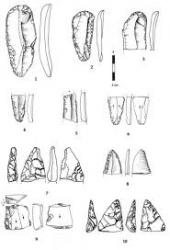 Kozarnika , Kovachevo, Sozopol - Sofia's Archaeological Museum hosted a conference dedicated to the Bulgarian-French archaeological excavations over the years. The conference showcased three major recent excavations. The excavations in question have taken place in the Kozarnika cave near Bulgaria's Northwestern town of Vratsa, in the Southwestern Struma valley and in the Black Sea town of Sozopol. The Kozarnika project was a collaboration between the Centre National de la Recherche Scientifique (CNRS) in France and the Archaeological Institute and Museum of the Bulgarian Academy of Sciences. It started in 1984 and has been headed Dr. Prof. Nikolay Sirakov since 1996. The archaeologists discovered a human molar tooth (considered to be the earliest human (Homo erectus/Homo ergaster) traces discovered in Europe outside Caucasian region) and lower palaeolithic assemblages that belong to a core-and-flake non-Acheulian industry. They also stumbled upon a series of parallel lines engraved in an animal bone between 1.4 and 1.2 million years ago may be the earliest example of human symbolic behaviour, BBC wrote back in 2004. The Bulgarian-French expedition near the village of Kovachevo in the valley of the Struma River discovered the oldest artifacts testifying about agricultural practices in the Neolithic period. "We, experts in Neolithic and Chalcolithic feel wonderful in Bulgaria, which is perhaps the richest country in Europe, regarding this historical heritage," archaeologist Jean-Francois Jarrige, Secretary General of Commission on Archaeological Excavations in France, said in an interview for the Bulgarian National Radio in April. The Sozopol expedition focused on excavations within the ancient Greek town Apollonia Pontica. Surprising discoveries were found shedding light on the local production of elaborate ceramics. In 2010, the Bulgarian-French expedition to Sozopol was renewed.
Kozarnika , Kovachevo, Sozopol - Sofia's Archaeological Museum hosted a conference dedicated to the Bulgarian-French archaeological excavations over the years. The conference showcased three major recent excavations. The excavations in question have taken place in the Kozarnika cave near Bulgaria's Northwestern town of Vratsa, in the Southwestern Struma valley and in the Black Sea town of Sozopol. The Kozarnika project was a collaboration between the Centre National de la Recherche Scientifique (CNRS) in France and the Archaeological Institute and Museum of the Bulgarian Academy of Sciences. It started in 1984 and has been headed Dr. Prof. Nikolay Sirakov since 1996. The archaeologists discovered a human molar tooth (considered to be the earliest human (Homo erectus/Homo ergaster) traces discovered in Europe outside Caucasian region) and lower palaeolithic assemblages that belong to a core-and-flake non-Acheulian industry. They also stumbled upon a series of parallel lines engraved in an animal bone between 1.4 and 1.2 million years ago may be the earliest example of human symbolic behaviour, BBC wrote back in 2004. The Bulgarian-French expedition near the village of Kovachevo in the valley of the Struma River discovered the oldest artifacts testifying about agricultural practices in the Neolithic period. "We, experts in Neolithic and Chalcolithic feel wonderful in Bulgaria, which is perhaps the richest country in Europe, regarding this historical heritage," archaeologist Jean-Francois Jarrige, Secretary General of Commission on Archaeological Excavations in France, said in an interview for the Bulgarian National Radio in April. The Sozopol expedition focused on excavations within the ancient Greek town Apollonia Pontica. Surprising discoveries were found shedding light on the local production of elaborate ceramics. In 2010, the Bulgarian-French expedition to Sozopol was renewed.
http://www.novinite.com/view_news.php?id=141573
ROYAUME UNI – Cheadle - Archaeology enthusiasts are hoping to unearth hundreds of years of history when they carry out a dig at a Staffordshire pub. Several test pits are being opened up on the site of The Huntsman pub, in Brookhouses, Cheadle. The pub served its first pint in the 1830s and was originally called the New Inn. But it is believed the building itself may date back to 1775.
http://www.thisisstaffordshire.co.uk/Archaeological-dig-unearth-pub-s-history/story-16582146-detail/story.html
ROYAUME UNI – 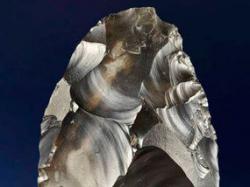 Happisburgh - Experts have chosen a Stone Age handaxe found in Norfolk as Britain’s top archaeological treasure of recent years. The handaxe, discovered in 2000 by a dog walker in Happisburgh, revolutionised accepted knowledge and put the area on the map as the earliest known location for humans in the whole of north-west Europe. The Palaeolithic flint handaxe, with a groove for the user’s thumb, has been dated to 700,000 BC. Roger Bland, head of the Portable Antiquities Scheme, said: “Few other finds can have caused us to rethink our origins in these islands so radically, as it pushes back the evidence for the earliest human occupation of Britain by at least 100,000 years.
Happisburgh - Experts have chosen a Stone Age handaxe found in Norfolk as Britain’s top archaeological treasure of recent years. The handaxe, discovered in 2000 by a dog walker in Happisburgh, revolutionised accepted knowledge and put the area on the map as the earliest known location for humans in the whole of north-west Europe. The Palaeolithic flint handaxe, with a groove for the user’s thumb, has been dated to 700,000 BC. Roger Bland, head of the Portable Antiquities Scheme, said: “Few other finds can have caused us to rethink our origins in these islands so radically, as it pushes back the evidence for the earliest human occupation of Britain by at least 100,000 years.
http://www.eveningnews24.co.uk/news/photo_gallery_happisburgh_handaxe_chosen_as_uk_s_top_treasure_finds_from_sedgeford_postwick_and_billingford_in_shortlist_1_1454744
FRANCE – 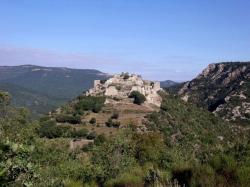 Termes - Imaginez une forteresse perchée à 470 m d'altitude, des parois vertigineuses qui dominent les gorges du Termenet : c'est le château de Termes, l'un des plus puissant du Languedoc, et surtout une fameuse citadelle cathare qui résista 16 mois à Simon de Montfort durant la Croisade des Albigeois. Un site fabuleux où s'enchaînent les fouilles archéologiques, le château, longtemps enseveli sous la terre et la végétation, est en pleine renaissance et offre chaque été de nouvelles découvertes historiques. "Après avoir remonté le temps, à présent nous dégageons l'espace : bientôt, nous pourrons restituer au public de nouvelles salles entièrement mises au jour", a expliqué l'archéologue qui se penche désormais sur la question du donjon. Violemment détruite à l'explosif en 1654, la plus haute pièce du château n'a pas encore livré tous ses secrets. C'est pourquoi le chantier de Termes, "mené avec efficacité et en bonne synergie avec les bénévoles, les professionnels, les services de l'Etat, la mairie", revêt une importance toute particulière. Sachant que c'est l'un des sites cathares les plus étendus, et aussi l'un des plus importants lieux de fouille archéologique en France. D'ailleurs, le maire Hervé Baro a annoncé l'ouverture d'un nouveau chantier à l'automne : "Financé par l'Etat, l'Europe, le département et la région pour un montant d'environ 350 000 €, il permettra de reconstituer partiellement la rampe d'accès et la façade, de reconstruire la porte d'entrée du château et peut-être de rehausser la tour.
Termes - Imaginez une forteresse perchée à 470 m d'altitude, des parois vertigineuses qui dominent les gorges du Termenet : c'est le château de Termes, l'un des plus puissant du Languedoc, et surtout une fameuse citadelle cathare qui résista 16 mois à Simon de Montfort durant la Croisade des Albigeois. Un site fabuleux où s'enchaînent les fouilles archéologiques, le château, longtemps enseveli sous la terre et la végétation, est en pleine renaissance et offre chaque été de nouvelles découvertes historiques. "Après avoir remonté le temps, à présent nous dégageons l'espace : bientôt, nous pourrons restituer au public de nouvelles salles entièrement mises au jour", a expliqué l'archéologue qui se penche désormais sur la question du donjon. Violemment détruite à l'explosif en 1654, la plus haute pièce du château n'a pas encore livré tous ses secrets. C'est pourquoi le chantier de Termes, "mené avec efficacité et en bonne synergie avec les bénévoles, les professionnels, les services de l'Etat, la mairie", revêt une importance toute particulière. Sachant que c'est l'un des sites cathares les plus étendus, et aussi l'un des plus importants lieux de fouille archéologique en France. D'ailleurs, le maire Hervé Baro a annoncé l'ouverture d'un nouveau chantier à l'automne : "Financé par l'Etat, l'Europe, le département et la région pour un montant d'environ 350 000 €, il permettra de reconstituer partiellement la rampe d'accès et la façade, de reconstruire la porte d'entrée du château et peut-être de rehausser la tour.
http://www.midilibre.fr/2012/07/22/le-chateau-de-termes-un-siege-de-decouvertes,537389.php
GRECE - 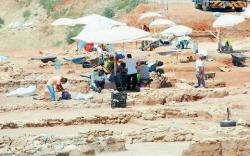 Thessalonique : nouvelle découverte due aux travaux du métro, l'emplacement d'un des 26 sites réunis par Cassandre pour fonder la ville ; les vestiges remontent à l'époque classique.
Thessalonique : nouvelle découverte due aux travaux du métro, l'emplacement d'un des 26 sites réunis par Cassandre pour fonder la ville ; les vestiges remontent à l'époque classique.
http://www.ethnos.gr/article.asp?catid=22784&subid=2&pubid=63684194
GRECE - Iérapétra (Crète) : découverte du plus grand four en terre cuite connu à ce jour pour l'époque du minoen récent.
http://news.in.gr/culture/article/?aid=1231204942